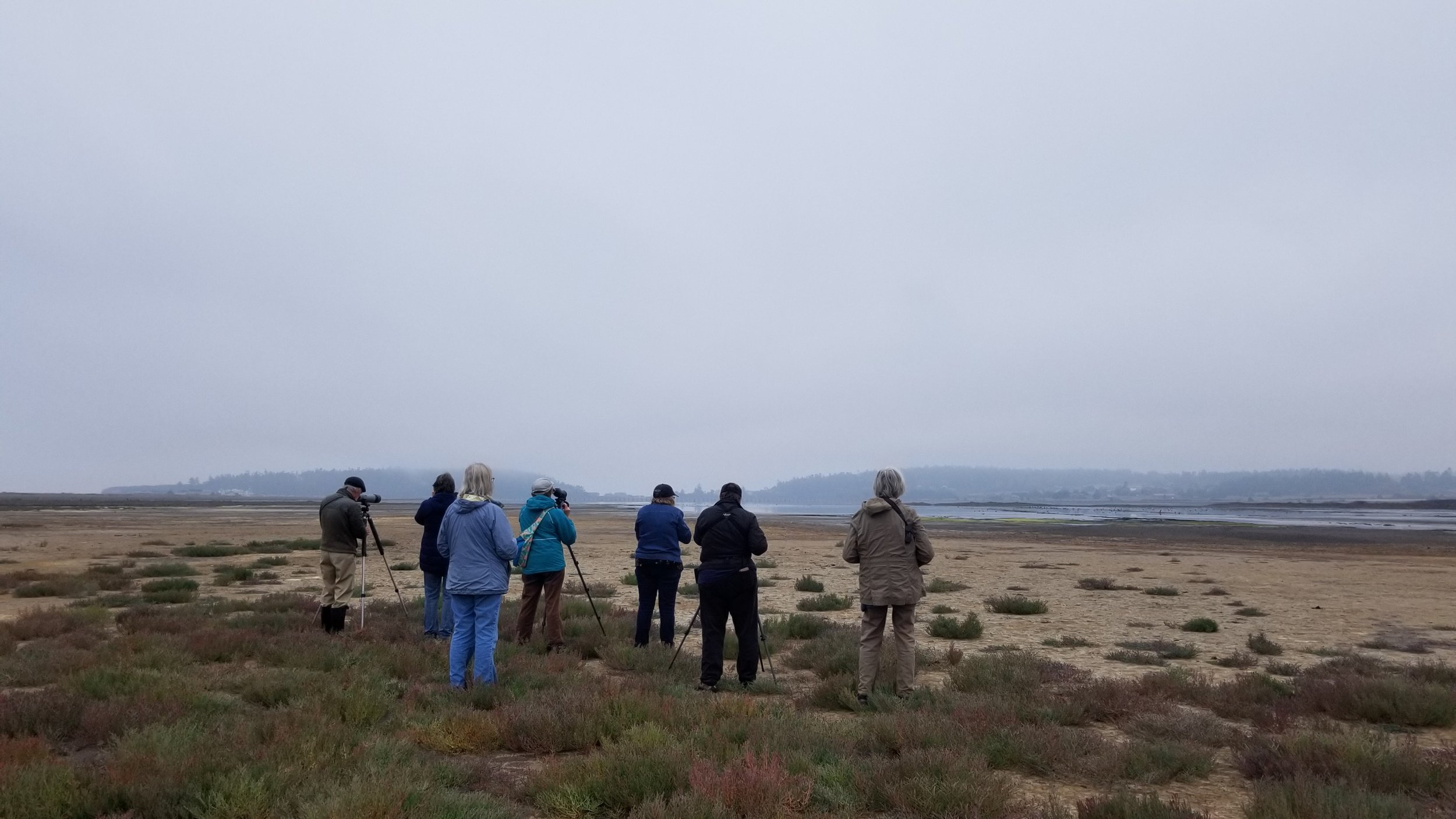
Birding Whidbey Island
Whidbey Audubon Society's Guide to 16 Special Spots
Photo - Jann Ledbetter
Whidbey Island lies in the rain shadow of the Olympic Mountains. It is part of the San Juan archipelago of over 100 forested islands. Wildlife habitats include old growth and mature second growth Douglas fir forests, old orchards and open fields, fresh and salt-water wetlands and miles of scenic coastline.
Species noted are representative and not a complete list. Gray whales and many of our birds are migrants and may be seen only part of the year. Field guides can help determine seasonal patterns. Complete island bird lists are available at local libraries, inns and bed and breakfasts.
See also our website page Birding Resources.
Deception Pass State Park
Off Highway 20. Old growth forest, wetland, rocky/sandy shore, lakes, tide pools. Loons, grebes, murrelets, other waterfowl, eagles, Belted Kingfishers, warblers, swallows.
Dugualla Bay and Lake
From Highway 20, east on Frostad Road, North on Dike Road. Sheltered bay, mud flats, brackish lake. Swans, dabbling ducks, including Canvasbacks, other waterfowl, wading birds.
Swan Lake, Joseph Whidbey State Park
From Highway 20, west on Swantown Road to West Beach Road. Rocky/sandy beach, freshwater lake, cattail marsh. Eagles, Northern Harriers, wading birds, loons, grebes, sea ducks, including Harlequin Ducks, dabbling ducks, Black Oystercatchers, Common Yellowthroats, Marsh Wrens.
Fort Ebey State Park
From Highway 20, west on Libbey Road, south on Hill Valley Road. Second growth forest, thickets, lake, high bluff, beach. Seabirds and waterfowl, Belted Kingfishers, Red Crossbills, woodpeckers, other forest birds including Red-breasted Nuthatches, Brown Creepers, kinglets.
Kennedy Lagoon
From Highway 20, east on Madrona Way. Sheltered lagoon. Belted Kingfishers, waterfowl including Hooded Mergansers, goldeneyes, Buffleheads, scaups, scoters.
Penn Cove, Coupeville Wharf
From Highway 20, north on Main Street, west on Front Street. Large saltwater cove. Belted Kingfishers, herons, loons, goldeneyes, Buffleheads, scaups, Pigeon Guillemots. Look for river otters, harbor seals, jellyfish, sea stars.
Ebey's Landing
From Highway 20, southwest on Ebey Road. High and low bluff, beach, farm fields, hiking trail. Loons, grebes, waterfowl, Western Meadowlarks, blackbirds, raptors.
Fort Casey
From Highway 20, south on Main Street, becoming Engle Road. Rocky beach, forest. Loons, grebes, auklets, Pigeon Guillemots, mergansers, gulls, Great Horned Owls, passerines, including chickadees, Red-breasted Nuthatches, Brown Creepers, Pacific Wrens, warblers.
Crockett Lake
Adjacent to Fort Casey (see #8). Brackish lake, large sandy spit, open bay. Lakeside: abundant wading birds, waterfowl, eagles, Northern Harriers, Peregrine Falcons, other raptors. On spit: swallows, Savannah Sparrows. Open bay: auklets, cormorants, Pigeon Guillemots.
Port Townsend Ferry
Adjacent to Fort Casey (see above). Take a break and walk aboard the ferry for 30 minutes each way on the water. Cormorants, loons, grebes, gulls, Pigeon Guillemots, murrelets. Watch for sea lions and harbor seals.
Pacific Rim Institute for Environmental Stewardship
From Highway 20 south of Coupeville, North on Parker Road. Open prairie and fringing woods. White-crowned and Savannah Sparrows, swallows, Northern Harrier, American Kestrel, eagles, woodpeckers, occasional Western Bluebird.
Greenbank Farm
From Highway 525, east on Wonn Road. Open grassland, cattail marsh, farm pond, viewing platform. Northern Harriers, eagles, Red-tailed Hawks, Common Yellowthroats, Marsh Wrens, Red-winged Blackbirds, swallows, herons, waterfowl.
South Whidbey State Park
From Highway 525, west on Smugglers Cove Road. Old growth forest, beach. Osprey, Varied Thrush, woodpeckers, swallows, passerines including Red-breasted Nuthatches, Brown Creepers, Pacific Wrens.
Lone Lake
From Highway 525, north on Bayview Road, then west on Andreason Road, then south on Lone Lake Road. Lake, woodlot, thickets. Steller’s Jays, Bushtits, California Quail, waterfowl including mergansers, Northern Shovelers, scaups, Buffleheads.
Langley City Beach and Marina
Beach access off First Street, and Marina at east end of Wharf Street. Saltwater, thickets. Loons, grebes, cormorants, eagles, waterfowl including mergansers, scoters. Look for harbor seals, gray whales in spring. Sea stars, jellyfish visible from marina pier.Deer Lagoon Preserve
Deer Lagoon is a recognized Important Bird Area (IBA) with at least 211 different bird species documented. Washington State Fish and Wildlife has concluded Deer Lagoon is the single most important site on Whidbey Island for use by waterfowl, year around. The lagoon is a critical resting and feeding site for migrating shorebirds in the spring and fall. Click the “Deer Lagoon” link above for more information.
Another resource for birding Whidbey Island:
Banner Photo: Carlos Andersen

